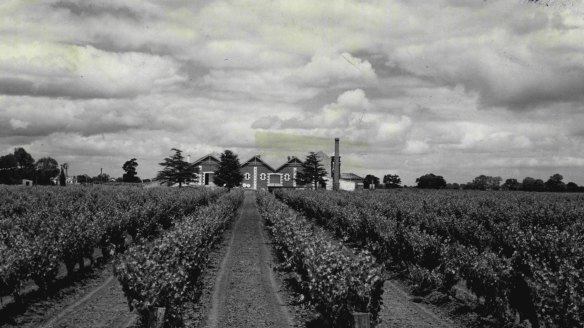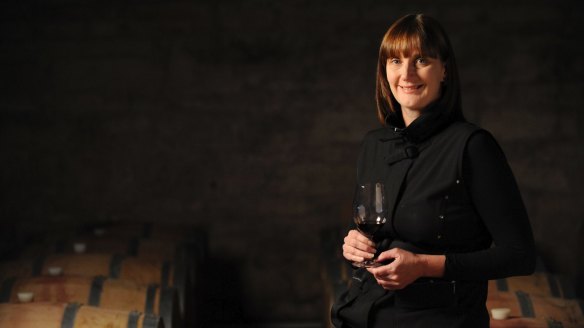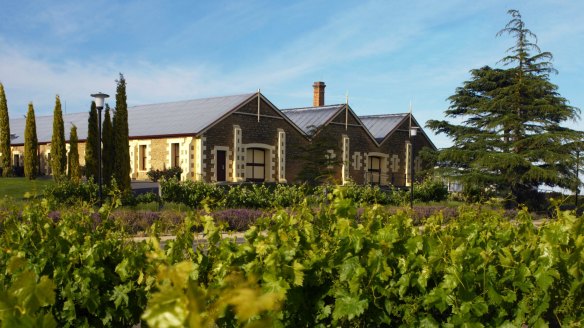Why Wynns Coonawarra Estate is one of Australia's best-value wineries

In 1951, when the Wynn family bought what is now Wynns Coonawarra Estate, Australia was a sadly wine-deprived place. The biggest-selling wine was sweet sherry, and if people drank alcohol, it was mostly beer.
Samuel Wynn had arrived in Australia from Russian-occupied Poland in 1913, aged 21. He'd set up a wine bar in Melbourne, a seriously unfashionable thing to do then. He'd been buying Coonawarra wine for years, but had no desire to own a winery and vineyard. That was the idea of his son David, a renaissance man who had varied interests in the creative arts and a vision for a future wine-drinking nation.
Against his ageing father's wishes, David bought what was then Chateau Comaum, a large three-gabled stone winery that had been built by the "father of Coonawarra", John Riddoch, in 1897. There were 54 hectares of vineyards, 36 hectares of pasture, a distillery and the winery. The Wynns paid £22,000 for the lot.

Few people were interested in high-quality red table wine.
But David Wynn was. He knew that wine and food went hand in hand and figured his family background in restaurants was the ideal way to introduce the pleasures of a glass of wine with dinner to the masses.
David was an innovative marketer. He commissioned an artist, Richard Beck, to design a label that featured a woodcut of the winery frontage. It's still in use today. He put a back label on the bottle, which featured a map showing the location of the little-known Coonawarra – both were firsts. He was also first to use the word "estate" in a name – signifying that the grapes were grown and the wine made on the owner's property.
David Wynn was an innovative marketer. He was first to use the word 'estate' in a name.
Later in 1951, David Wynn employed Roseworthy graduate Ian Hickinbotham to make the wine. He was only the second trained winemaker to work there, following Ewen McBain in 1898. Hickinbotham made the first Wynns wine, a 1952 shiraz from a poor year. In 1954 he made the first Wynns cabernet, the forerunner of a succession that has become one of Australia's most important wines. Since then Coonawarra has become synonymous with cabernet, as has Wynns.
I recently took part in a tasting of Wynns Coonawarra Estate cabernet sauvignon spanning 60 vintages from 1954 to 2015. To say the wines were outstanding would be to risk damning with faint praise. Hardly any were disappointing. True, most of the bottles had been perfectly cellared, but the '54 was still tasting superb, the '59 even better, and the famous '62 was stellar.
The famous "black label" Wynns cabernet has seen many changes in season, in winemaker, in vineyard practice, and in fashion. The remarkable thing is that most lesser-vintage wines have aged well and are still enjoyable.

Even more noteworthy is that the Wynns team continues to refine and improve what it does, from vineyard management to winemaking to the bottle. Replanting with selected clonal material, rehabilitating old vines, trellising and vine canopy management, soil management, pruning, harvesting – there is scarcely any area where improvements have not been made. The screw-cap, introduced in the 2006 vintage, will ensure that today's wines have even more reliable cellaring careers.
The great vintages
Wynns "black label" cabernet sauvignon is one of Australia's greatest wines.
It's a wine of major historical importance. It's also one of our greatest value-for-money wines. In the best vintages it's one of Australia's greatest bargains, and in the other vintages, merely good value for money – even at the full retail price of $45. And there are no off-vintages these days – even the 2011, from a notoriously wet season, is excellent.
The great vintages are 1959, '62, '66, '67,
'76 (Jimmy Watson Trophy winner), '82, '90, '91, '92, '96, '04, '06, '07, '08, '10, '12, '13, '14 and especially the next release, 2015. Sue Hodder and I agreed that '12 and '15 are two of the best ever.
Wynns makes a large volume of this wine, so assuming the usual discounting applies, the 2015 will be outstanding value for money as it's a great vintage.
The fact that it's also a wine that ages long-term and has the ability to develop and build complexity over 30 years and more makes it even more desirable.
Why is it so special?
"Black label" is Coonawarra's benchmark cabernet. It is so consistent because Wynns owns the majority of great vineyard land in the district. This one company alone owns 500 hectares of vines, including more than 30 per cent of the prized terra rosa land, including some of Coonawarra's oldest plantings. It is largely on what is famously known as the "cigar-shaped strip", a ridge of slightly elevated land on either side of the main road, the Riddoch Highway, which has the shallowest red topsoil with the prized limestone subsoil closest to the surface. This provides an ideal combination of drainage and nourishment for the cabernet sauvignon vines.
The style
Wynns cabernet sauvignon is an elegant, medium-to-full-bodied wine. These days, since Sue Hodder has been in charge, it's better balanced than ever, with seamless acidity and fine-grained tannins. Fruit ripeness is spot-point, avoiding any under- or over-ripe characters. This will be further enhanced in future as Wynns has bought an optical grape sorter, which discards imperfect grapes.
Hodder candidly admits that when she started at Wynns in 1993 there was a tacit understanding that she would try to make big wines. "One thing I have learnt is to have confidence in making medium-bodied wines, which are what the region naturally produces. Earlier picking is part of that, and consequently less acid addition, but also viticultural changes have meant the vines are in better balance and are taking up less potassium, which means we have lower pHs."
Lower pH means less need for acid addition, which can upset the natural balance of a wine.
The vineyard improvements have much to do with the distinguished Allen Jenkins, regional vineyard manager based at Wynns since 2001. Wynns' vineyard manager is Ben Harris. Continuity of talented winemakers also counts for a lot, and Sue Hodder and Sarah Pidgeon have made a great team, working together for the past 18 years.
The 60th vintage
The first Wednesday in August, dubbed "Wynnsday", is the day the new vintage is released each year, and this year's is truly a wine to make a fuss about. It's the 2015 vintage, the 60th vintage of "black label", and I think it's one of the best ever.
The full recommended retail price is $45, but previous vintages have been routinely discounted to little more than $30 in the chain outlets, which is where most of this wine is sold.
The bottle wears a cigar-band around its neck commemorating the 60th vintage and, as usual, the front-label depicts the original Richard Beck woodcut image of the winery. The back-label still has the map showing the Wynns vineyards on the terra rosa strip, and the location of Coonawarra itself.
The 2015 is a wonderful wine. I rated it 98 points, equal with the 2012 and a whisker ahead of the '10, '13, '08, '06, '91, '82 and '66.
The very youthful, deep purple colour introduces a young, fresh bouquet, the bright fruit aromas recalling blueberry, raspberry and mulberry. Oak plays an almost invisible supporting role. A very elegant wine, intense, balanced, finely honed, with utterly gorgeous flavours of tremendous persistence. It will cellar happily for 30+ years.
The winemakers
1951-53 Ian Hickinbotham
1954-58 Norm Walker
1961-68 Jock Redman
1971-77 Ken Ward
1978-85 John Wade
1986-97 Peter Douglas
1989-95 Peter Bissell
1993-present Sue Hodder
1998-present Sarah Pidgeon
